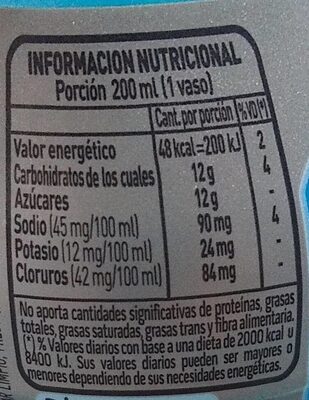Cool Blue - Gatorade - 500 ml
This product page is not complete. You can help to complete it by editing it and adding more data from the photos we have, or by taking more photos using the app for Android or iPhone/iPad. Thank you!
×
Barcode: 7792170042258 (EAN / EAN-13)
Common name: alimento líquido a base de sales de sodio y potasio sabor a frambuesa.
Quantity: 500 ml
Packaging: Plastic, Pet-polyethylene-terephthalate, Bottle, Transparent-pet
Brands: Gatorade
Categories: Beverages and beverages preparations, Beverages, Non-alcoholic beverages, Flavoured Drinks, Sweetened beverages
Labels, certifications, awards: No preservatives, With HFCS
Origin of ingredients: Argentina
Manufacturing or processing places: Buenos Aires, Bolivia
Traceability code: RNPA 01034553, 080503140061, RNE 01000769, MSP 38533
Link to the product page on the official site of the producer: https://gatorade.lat/










